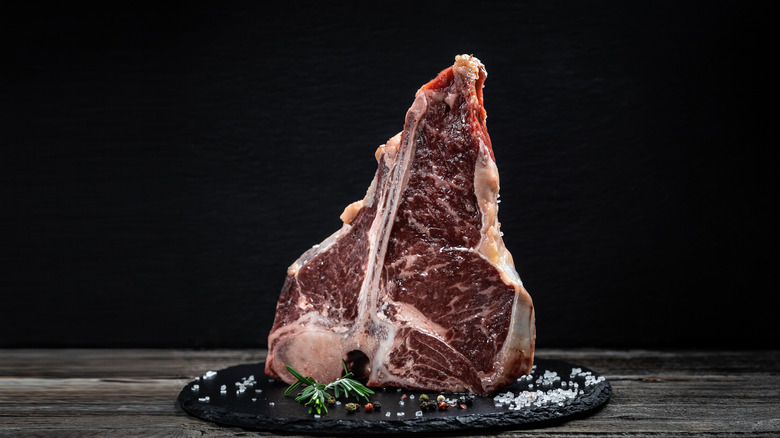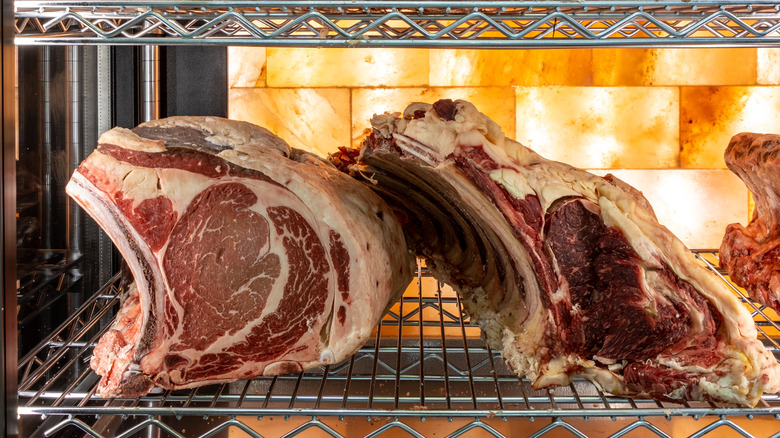The Basic Guideline To Remember If You're New To Buying Aged Beef
As the saying goes, good things come to those who wait. The same can be said when it comes to buying aged beef. But, just how long should you wait? For a meat-purchasing newbie, the answer to that question might not be so clear-cut. Fortunately, we're sharing the basic guideline you should follow whenever you purchase aged beef.
To be clear, aging refers to how long a piece of meat is stored after slaughter. Despite the fact that fresh meat initially undergoes rigor, which is a stiffening of the muscles, the University of Missouri explains that after a few days, these muscles begin to relax. While hardworking enzymes are responsible for tenderizing meat, Steak School shares that the presence of bacteria within the storage environment works to heighten flavors.
The aging process can be done in two ways — wet-aging or dry-aging. Wet-aging refers to refrigerating meat in sealed bags over a shorter period of time — whereas Beef. It's What's For Dinner describes dry-aging as a method where meat is left uncovered for longer. Despite the fact that there isn't a limit on just how long beef can be aged, there is a sweet spot when purchasing dry-aged beef.
Longer aging processes result in more complex flavors
In the early days of aging, there won't be significant changes to the meat. In fact, it'll likely remain the same vibrant crimson hue with the same basic beef flavors, except in the case of wet-aged meat which will display improved quality within 10 days, notes Cattlemen's Steakhouse. However, typically with the advent of time, can taste and texture really start to transform.
Although it may take 14 days for enzymes to tenderize meat properly, the Barbecue Bible underlines that beef needs at least 21 days for complex flavors to start developing — the golden rule being that you should always opt for dry-aged beef that's been maturing for at least three weeks. That said, while beef aged 21 days will start to convey hints of nuttiness, Steak Locker shares that dry-aged beef really starts to hit its stride around 30 days as the steak begins to lose moisture, concentrating more nuanced flavors and highlighting umami. At this point, the meat will also start to darken slightly. Any maturation beyond this will only increase funkiness, and of course, price point.
All that's left to think about is how you'll put that aged beef to use. Whether you decide to grill up a steak as is or grind up that meat for a gourmet burger blend is totally up to you!

